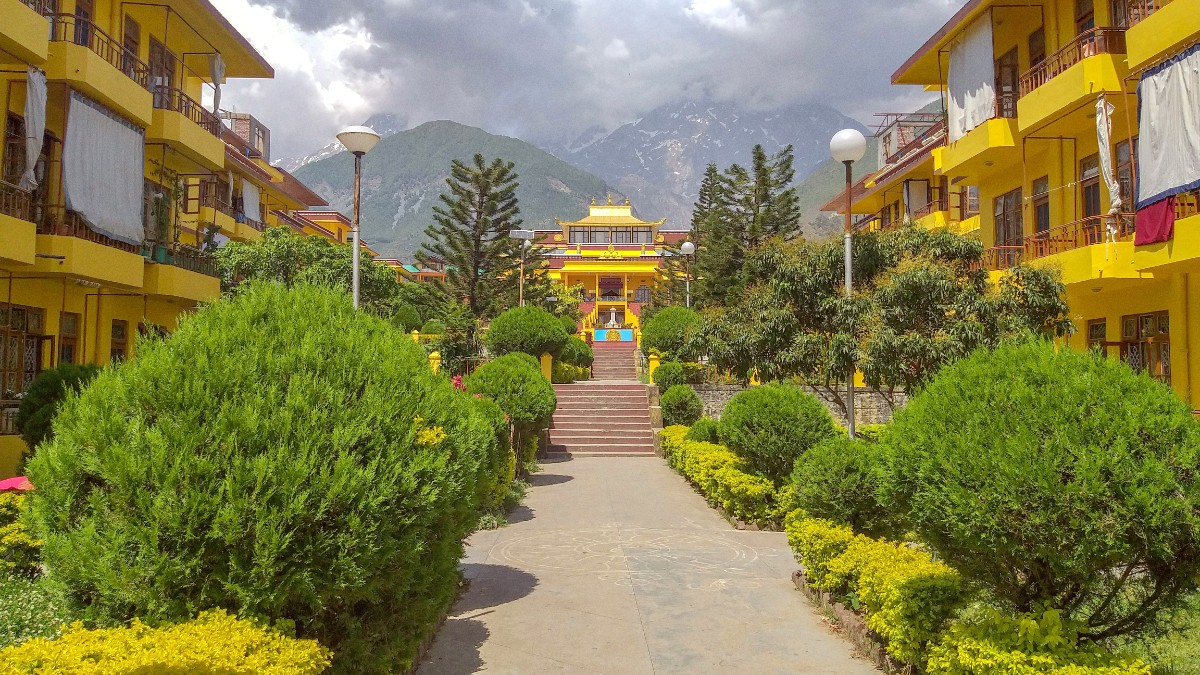
India
Dharamsala’s culinary landscape is heavily influenced by Tibetan cuisine, thanks to the large Tibetan population residing in McLeod Ganj.
This community brought its traditional dishes and cooking methods, now a staple for locals and tourists. Himachali cuisine and general North Indian dishes are also widely available.
Hub for Tibetan and international cafes, wide array of choices for tourists. Lively atmosphere.
More traditional Indian eateries (dhabas and restaurants) serving Himachali and North Indian dishes.
Village cafes with relaxed vibes, popular with long-term visitors and trekkers.
Steamed or fried dumplings, a culinary hallmark of Tibetan cuisine, ubiquitous in McLeod Ganj. Fillings include vegetables, paneer, chicken, or mutton. Served with spicy dipping sauce.
Find them at almost any Tibetan restaurant or street food stall.
Thukpa: Hearty Tibetan noodle soup. Thenthuk: Similar but with hand-pulled, flat, irregular noodles, distinct texture.
Many Tibetan eateries serve variations.
Soft, fluffy, fried bread. Popular breakfast item, often with butter, jam, or honey. Light, airy texture alongside tea or coffee.
Widely available in Tibetan cafes.
Beyond momos, the streets of McLeod Ganj offer spring rolls, samosas, and pakoras. These items quick, budget-friendly snacks.
These Indian-Chinese stir-fried noodle or vegetable dishes are incredibly popular. A flavorful and often spicy alternative.
Fine dining options are limited in Dharamsala. Some upscale hotels in Lower Dharamsala or surrounding areas may refined dining experiences.
McLeod Ganj numerous mid-range restaurants that a mix of Tibetan, Indian, Italian, and Israeli cuisines.
Small, family-run eateries ("dhabas") and numerous street food stalls are abundant.
Many cafes serve decent pizza and pasta. Due to Israeli travelers, places serve falafel and shakshuka.
Catering to Western palates.
Some cafes offer continental breakfast items, sandwiches, and salads.
Variety travelers can find familiar tastes.
Vendors fresh produce, spices, prepared snacks.
Dharamsala does not have specific large food halls.
Smaller, informal dining spots are common.
Experience a true taste of local life.
Halal meat is generally available in India. Specific Halal restaurants might be limited in Dharamsala. Inquire locally or look for signs.
Inquire locally for specific needs.
Kosher food is very rare in Dharamsala. Travelers requiring Kosher meals should plan for self-catering or bring their own provisions.
Self-catering is advisable.
Look for restaurants that explicitly state "vegan options," "gluten-free options," or "dairy-free" on menus or signage.
Beyond simply dining, Dharamsala engaging culinary experiences that deepen your appreciation for local food traditions.
If you have severe food allergies, carry an allergy card translated into Hindi and Tibetan. This helps communicate your needs clearly to restaurant staff.
Many cafes in McLeod Ganj feature rooftop seating, providing panoramic mountain views that enhance the dining experience.
Some cafes also host live music evenings or open mic nights, adding to the relaxed ambiance.
The blend of international and local influences a cafe culture that is both unique and welcoming.
During Tibetan festivals, special traditional dishes become available. Guthuk, a noodle soup with dough balls, is traditionally eaten two days before Losar.
Inquire locally for specific festival dates.
These cultural celebrations an opportunity to sample unique seasonal and celebratory dishes.
Directly engage with local culinary traditions.
Enroll in a Tibetan cooking class to learn to make momos or thukpa, a hands-on cultural experience.
Do not miss the opportunity to try Momos from a local street vendor. These dumplings an authentic taste of Tibetan cuisine.
Sample Butter Tea for an unique Tibetan flavor or Masala Chai for a classic Indian experience.
Dharamsala's culinary scene is a journey through flavors, influenced by its unique blend of cultures.